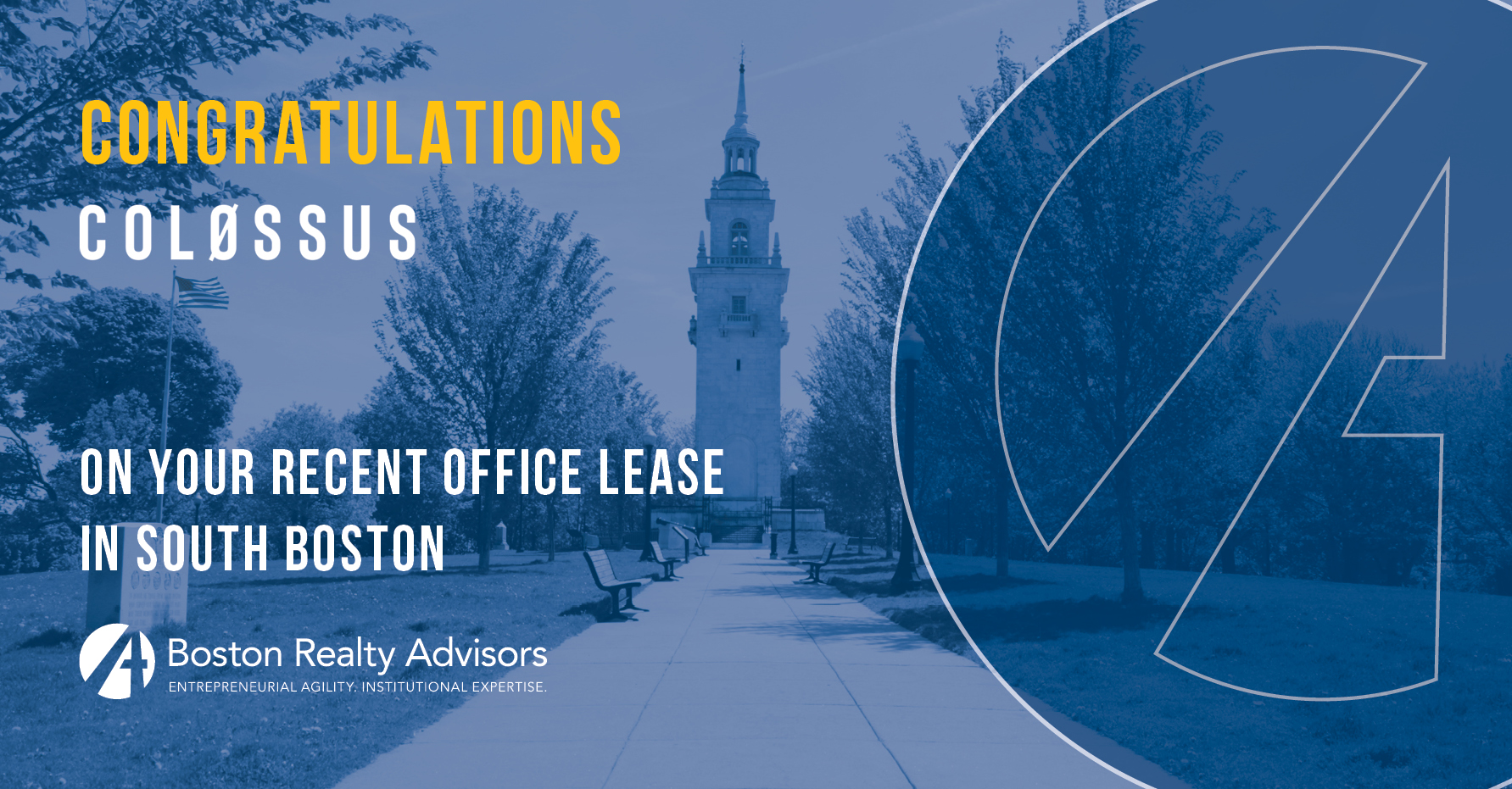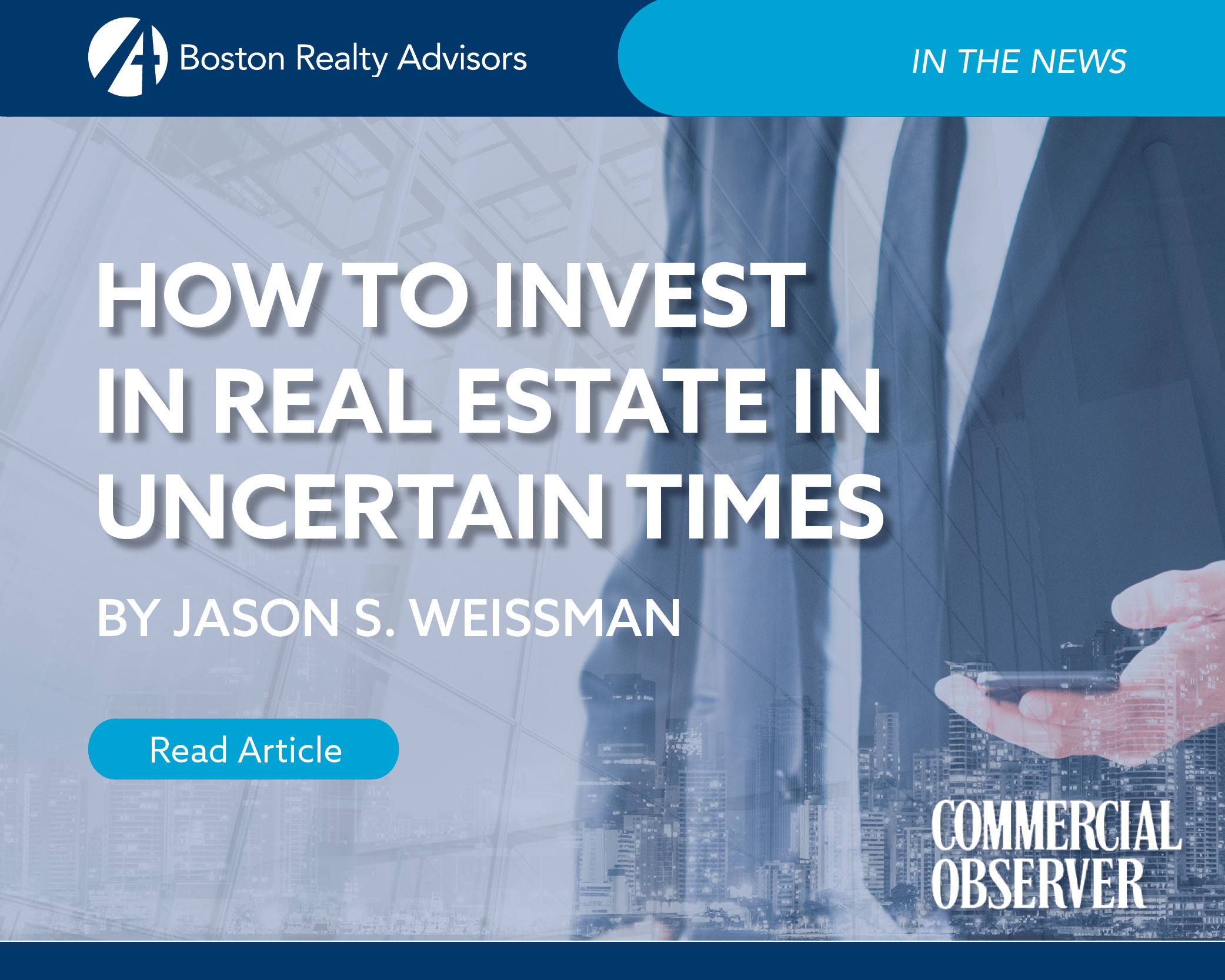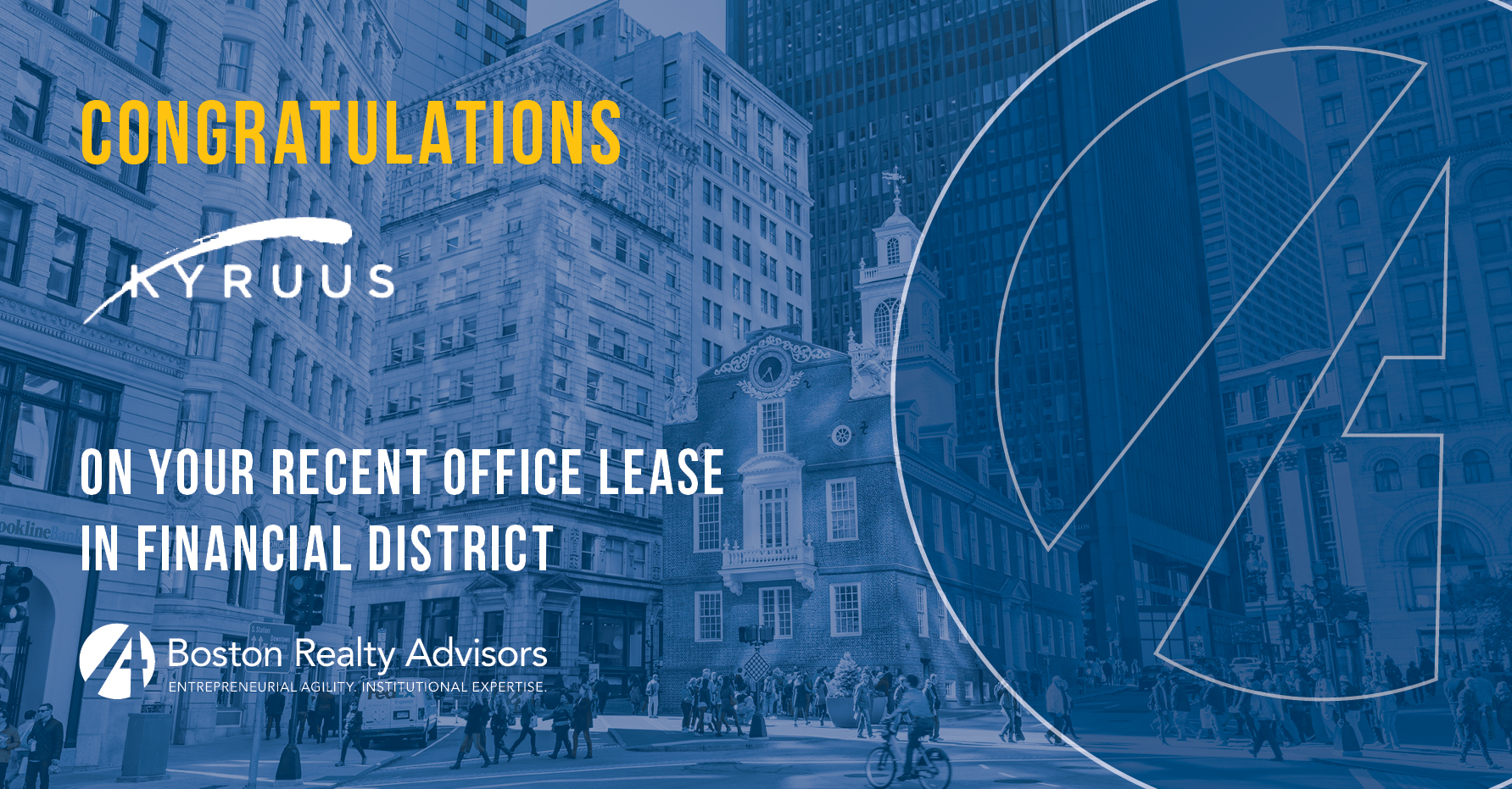
Author Archives: Wil Catlin
0 CRES Stats Report | Week Ending January 15
CRES Stats Report | Week Ending January 15
- 48 spaces hit the market as available in the subject area in the last 7 days, equating to ~950,000 SF which is mostly made up of 10 World Trade Center Avenue (new product) and 125 Necco (new product);
- 17 spaces (over 1,000 SF) came off the market equating to ~95,000 SF;
- The current availability rate in Boston kicking off ’21 is just a smidge under 16,000,000 square feet.
0 CRES Stats Report | Week Ending January 8
CRES Stats Report | Week Ending January 8, 2020
- 35 spaces hit the market as available in the subject area in the last 14 days, equating to ~300,000 SF which is within the recent range;
- 24 spaces (over 1,000 SF) came off the market equating to ~358,000 SF largely due to big tranches of space at 100 Summer & 1 Marina Park coming off sublease;
- The availability rate in Boston ended 2020 at just under 16,000,000 square feet. With little active requirements of size in the market, the annual churn of lease renewals and delivery of a swath of new product, one wonders what the first quarter 2021 numbers will look like?
0 How to Invest in Real Estate in Uncertain Times

By Jason S. Weissman | Commercial Observer | December 10, 2020
At the flip of a switch, COVID-19 created a paradigm shift in real estate investment. Pension fund darlings turned ice cold overnight. Risk profiles turned on their heads. The four, classic real estate investment strategies of Core, Core-Plus, Value-Add and Opportunistic are no longer definitive. COVID-19 also provided the collective built environment with a valuable stress test, revealing new risk variables.
These risk variables include two major components of uncertainty: migration trends and how people will work in the future. In order for real estate investors to stay competitive during the current climate and deliver compelling value, they will have to make educated bets on an unpredictable future. The good news: centralized information and greater visibility into data is on our side.
The pandemic upended the impending population growth of major North American cities, leaving the future of urbanization a guessing game. Chris Nebenzahl, editorial director at Yardi Matrix, recently explained that many large metros underwent five years of outward migration in just six months. Additionally, according to a recent economic report by Upwork, between 14 and 23 million Americans plan to move from urban to suburban and tertiary markets.
To appreciate how urbanization will rebound, multiple questions need to be answered. How will business travel change? Are new shopping trends here to stay? Will people work remotely in perpetuity? There is no magic remedy, and these uncertain times make all questions more challenging to answer.
Even during the most demanding of times, we must not abandon the tried-and-true methods of evaluating real estate investment opportunities. Evolving commercial occupancy rates, consumer trends and new work routines will continue to be the primary drivers of real estate investment models.
The most resilient assets throughout the pandemic have been real estate occupied by credit tenants in the net-leased retail and industrial categories, along with the single-family sector (SFR space) and multifamily assets within secondary cities and suburbia. According to the National Association of Real Estate Investment Trusts, industrial REITs are up 18.5 percent year to date. Data centers are up 37.86 percent, and single-family REITs are up 4.1 percent. Conversely (and not surprisingly), office REITs are down 27 percent, while lodging and resorts are down an astounding 45.58 percent.
How will the real estate investment ecosystem realign? In all times, and specifically during uncertain ones, financiers should profoundly evaluate risk. Investors should be extremely conservative on appreciation and the risks of cash flow with fluctuating tenancy. “Attention should be paid as much to what can go wrong (risk) as to what can go right (return),” Seth Klarman noted in his book, “Margin of Safety.”
As the real estate investment community treads forward, it will have to deep dive into the supply and demand of the asset types under consideration, and then attempt to make a future assumption on that supply and demand. Look back 15 to 20 years to review the historical rents, expenses and occupancy rates. This valuable information will enable investors to make assumptions based on market statistics and performance. The thoughtful collection of fundamental data can be developed into a strategic investment strategy to weather all cycles.
Despite these uncertain times, investors will make bets on core market central business districts, specifically the hospitality and retail properties located within them. These investment types have high risk, but also embody the potential for high returns. However, it is much too early to make predictions about either asset class or primary CBDs. In the immediate short term, cities are going to lose inhabitants. Taking the long view, though, I deeply believe in the attraction of big cities and the benefits of their walkability, convenience, lifestyle, and their culture that fosters innovation.
In an uncertain investment climate, invest in what you understand the best. Seek sticky cash flow and make sure leverage is low. Market timing is paramount, but staying power is just as important. To paraphrase Warren Buffett, “Don’t buy a stock unless you’re willing to hold it for 10 years.” Even good investments with a sound investment thesis have risk. Risks are diminished if you have time on your side.
Jason S. Weissman is founder and CEO of Boston Realty Advisors, the largest full-service independent real estate brokerage and advisory firm in Massachusetts.
0 CRES Stats Report | Week Ending December 11
CRES Stats Report | Week Ending December 11
- 27 spaces hit the market as available in the subject area in the last 7 days, equating to 226,000 SF which is above the recent range;
- 21 spaces (over 1,000 SF) came off the market equating to 174,000 SF;
- The availability rate in Boston ticked up again slightly this week at 15,600,000 SF;
- The question now is when the availability rate will “top out”, with the effects of the COVID therapies versus leases ending (and those tenants renewing, downsizing, going virtual or relocating out of the downtown)?
0 CRES Stats Report | Week Ending December 4
CRES Stats Report | Week Ending December 4
- 21 spaces hit the market as available in the subject area in the last 7 days, equating to ~174,000 SF;
- Only 5 spaces (over 1,000 SF) came off the market equating to ~20,000 SF;
- Buildings reported this week to have “grown” including 125 High, Oliver Street Tower by 30,000 SF; 470 Atlantic by 9,500 SF; and 545 Boylston Street by a whopping 9% or 7,936 SF
- The availability rate in Boston ticked up this week closing in on 16mmSF equaling the recent highs at ~15,500,000 SF
0 Back Bay COVID Lease Incentive – Free Rent Until July 2021
0 CRES Stats Report | Week Ending November 20
CRES Stats Report | Week Ending November 20
- 25 spaces hit the market as available in the subject area in the last 7 days, equating to ~115,000 SF (average size of space ~4,600 SF);
- Only 7 spaces (over 1,000 SF) came off the market equating to ~30,000 SF;
- Checking Back In on Back Bay: this is a 13,000,000 SF office area, with about 1.9MM SF of total availability equating to about 14.7%.
- The availability rate in Boston continues to skip across the surface around the all-time recent high as ~15,300,000 SF
0 Exclusive for Boston Realty Advisors A ‘Classic’ 60-Unit Rental in Harvard Square

By Joe Clements | The Real Reporter | November 18, 2020
CAMBRIDGE — Clover is never mentioned, but marketing materials from exclusive sales agent Boston Realty Advisors are singing the praises for Crimson Court in predicting the “generational” low-rise apartments steps from Harvard Square will be a 1960’s-era smash appealing to a vast audience of admirers.
“Crimson Court is an irreplaceable asset by every measurable standard,” BRA’s review proclaims of apartments held by the same clan who constructed the 60 low-rise units in 1965 and has “meticulously maintained” the holdings for all 55 of their leasehold seasons, BRA notes in a pitch suggesting the offering is much more than a one-hit wonder. That is literally true considering 375 Harvard St. is comprised of two buildings where two-thirds of the rentals are two-bedroom layouts mixed in with 10 studios and 10 one-bedrooms.
“We anticipate there will be a lot of interest in this,” BRA founding principal Jason S. Weissman tells Real Reporter in acknowledging the assignment launched Tuesday afternoon. By some accounts, Crimson Court could approach $425,000 per unit, which if achieved would land in the mid-$20 million range. Declining to discuss those unofficial estimates, Weissman says the level will be set through the bidding process but maintains institutional players will “definitely” be in the running along with private capital, setting up potential for a spirited battle among the suitors fueled by Crimson Court’s “Class-A location” between Harvard University and the Massachusetts Institute of Technology.
Besides being bookended by those two world-class schools attending on both the undergraduate and graduate levels, the rental constituency comes from young professionals drawn to a lineup of major employers in Cambridge’s Kendall Square and across the river in downtown Boston, both of which are accessible by the “Brain Train,” aka the MBTA Red Line subway which is a five-minute stroll from 375 Harvard St. For those attuned to money, money and other business perks, BRA has assembled a lineup showing dozens of Tier One Cambridge employers spanning the alphabet from Amazon, Biogen, Facebook, Google and Ironwood to Moderna, Novartis, Sanofi, Takeda and Yahoo.
There are also reams of direct public transit options spiriting tenants as far afield as Braintree, Waltham and booming Watertown, although BRA stresses Crimson Court has “a wealth of amenities” within walking distance from coffee houses, restaurants and takeout venues between Broadway and Massachusetts Avenue plus a panoply of entertainment and retail choices featuring global merchants and local boutiques. “Whether taking a stroll to a nearby park or enjoying the Charles River, the options are truly endless,” the BRA brochure further explains.
A leading urban multifamily operation with several record-breaking Cambridge deals under BRA’s belt over the past decade, Weissman expresses confidence Crimson Court will draw investor interest from around the corner and around the globe, and that instinct is already bearing fruit with BRA lining up tours of the asset almost immediately upon the exclusive assignment’s release Tuesday afternoon.
“We are super-excited about this one,” Weissman says of Crimson Court, adding BRA has a band of agents and specialists ready to assist bidders on demographics, rental metrics and other market trends. Managing Director and partner Nicholas M. Herz has debt and structured finance options available for interested investors, while Associate Directors Kevin Benzinger and Andrew Herald will dispatch street-level knowledge with support from Associates Daniel J. Dewing and Ryan McDonald plus Analyst David Harte.
Given the legacy nature of Crimson Court, Weissman says he is confident plenty of investors will pursue the asset and not only due to its steady performance over the past half-century and the “unprecedented opportunity” to buy such an infill location.
One tantalizing aspect, for example, are the 56 off-street parking spots located on the L-shaped site perched in a neighborhood where parking is severely restricted and regulated. That is one benefit of the asset’s longevity, according to BRA who is also promoting a value-add aspect available from upgrading the apartments and moving rents towards modern market averages.
“There are a lot of things to love about this property,” concurs Weissman who even sees a silver lining in the Covid-19 situation that appears in some analysis to indicate renters—and by extension, investors—have a perceived preference for more modest rental options size-wise compared to the high-rise residential towers that have been cropping up in metropolitan Boston this past decade. “The timing is right for this,” observes Weissman.
Crimson Court Apartments is held under the entity Audubon Road Associates CCSPE. The buildings are sited on a 32,325 sf parcel acquired by the family ownership in July 1963 just prior to their construction.
0 Congratulations, Kyruus, on your recent office lease in the Financial District

Congratulations, Kyruus, on your recent office lease in the Financial District.

